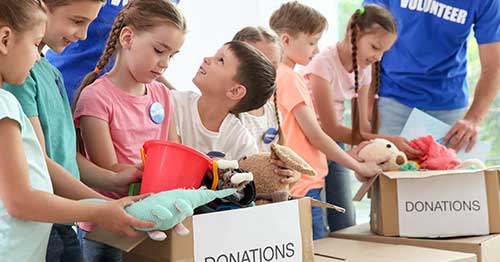Setting Healthy Screen Time Limits for Students Learning Online
by Julie Hersum
byAlyssa Austin
4 min to read“What are you grateful for?” The Thanksgiving and holiday seasons always seem to inspire feelings of gratitude. And while these seasons are an excellent reminder of the power and importance of gratitude, it doesn’t need to be a once-a-year thing. The benefits of gratitude can be created by engaging in gratitude activities for students all year-round.
Gratitude is “a positive emotion that involves being thankful and appreciative and is associated with several mental and physical health benefits,” according to the online health publication VeryWellMind. There are many interpretations and individual definitions of what it means to feel and express gratitude, but gratitude can generally be defined as the active recognition of something good that has happened and choosing to positively acknowledge that event.
There are many benefits to practicing gratitude regularly. According to positive psychology research from Harvard Medical School, “gratitude is strongly and consistently associated with greater happiness. Gratitude helps people feel more positive emotions, relish good experiences, improve their health, deal with adversity, and build strong relationships.”
And these benefits aren’t just related to mental and emotional health; there are proven associated physical benefits to practicing gratitude as well. Studies from Berkeley found that people who practice gratitude consistently report physical benefits such as a stronger immune system, lower blood pressure, better sleep, and a desire to take better care of their health.
For students specifically, expressing gratitude can have several benefits. For example, according to Greater Good in Education, gratitude can:

If you’re looking for some simple activities to help students build a sense of gratitude both in and out of school, check out these five suggestions:
Encourage your student to start each day by thinking of three things they are grateful for. The best time to do this can be first thing in the morning, before they even get out of bed. You could also incorporate writing into this practice by suggesting they jot down the three things they are grateful for in a designated notebook.
Speaking of writing down things you are grateful for, another wonderful practice for regularly showing and experiencing gratitude is keeping a gratitude journal. A gratitude journal is a simple tool to keep track of the good things in life. The practice of keeping a gratitude journal can help perpetuate the mindset that there is always something to be grateful for while also preparing students to deal with challenges and rough patches when they happen.
Conversely, you could also consider using gratitude activity worksheets to help students practice gratitude. This may be a great option for younger students.
Physical expressions of gratitude are also great gratitude activities for kids. Encourage your student to do one nice thing for someone else every day. Implementing this as a regular activity can help cultivate feelings of altruism and improve social-emotional awareness in students.

Gratitude activities can also be done in nature. For example, going on a gratitude walk as a family is a great way to practice gratitude. Simply head out for a walk and, while you are walking, take note of small details that you see, hear, smell, or experience and express gratitude for them verbally. This is also a great way to calm the mind and practice being in the present moment, which can combat feelings of stress and anxiety in students.
Another great way to practice gratitude as a family is by starting a gratitude jar. Acquire a jar, a box, or some other vessel. When something positive happens that a family member feels grateful for, have them write it down on a strip of paper and put it in the gratitude jar. Then, establish a time each week (for example, before dinner on Sunday nights) where you go through the jar as a family, and everyone can share their grateful moments from the week.
With the implementation of simple routines and gratitude activities, gratitude can easily become a habit that is practiced all year long. Learn even more about how to build an attitude of gratitude.
